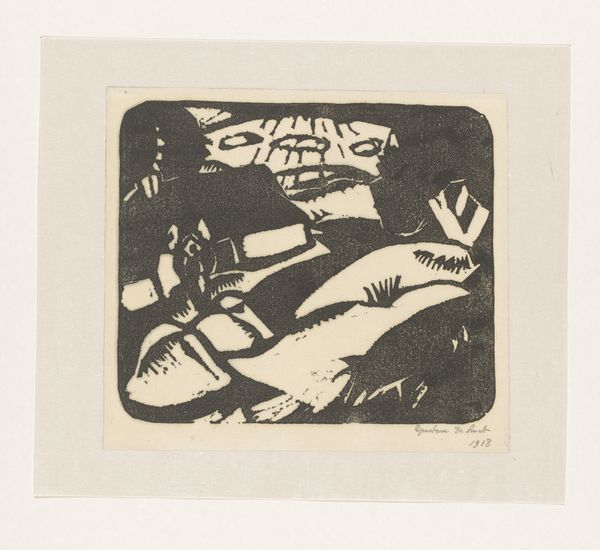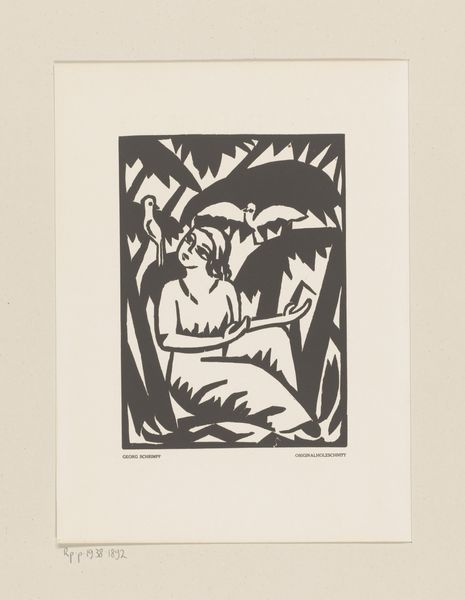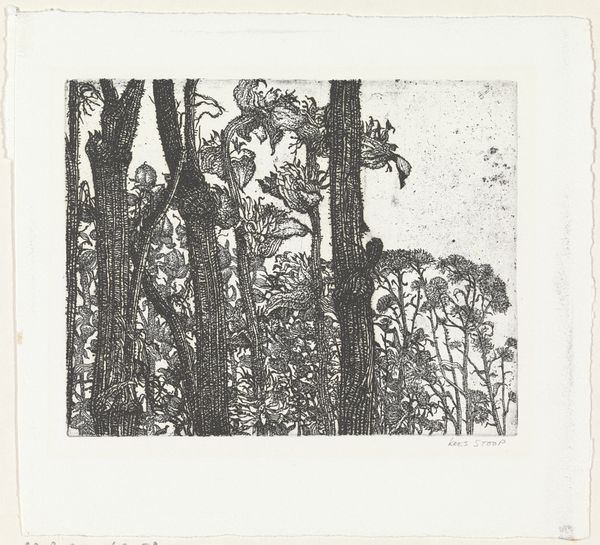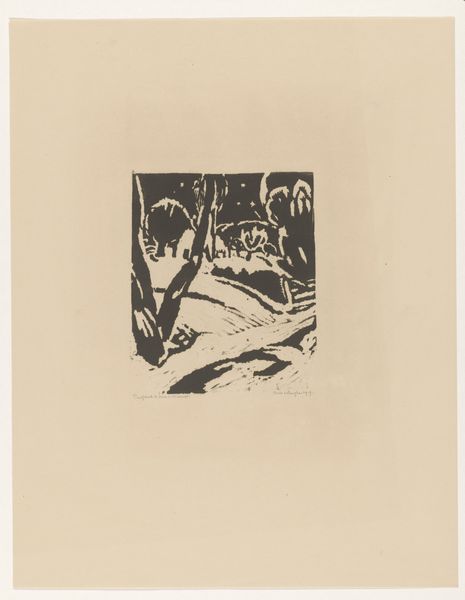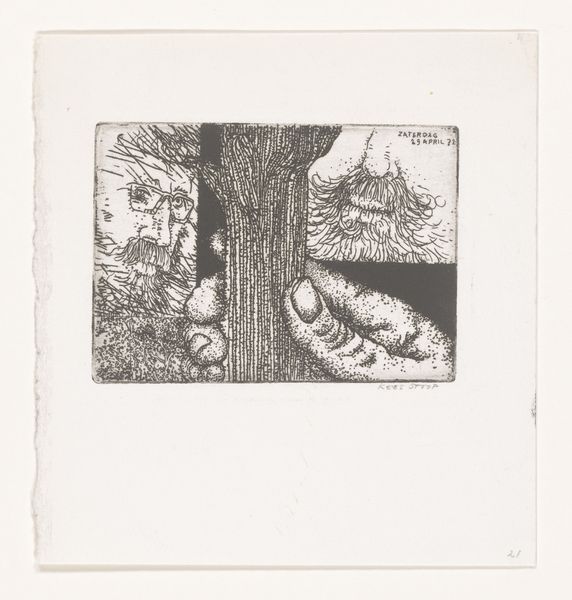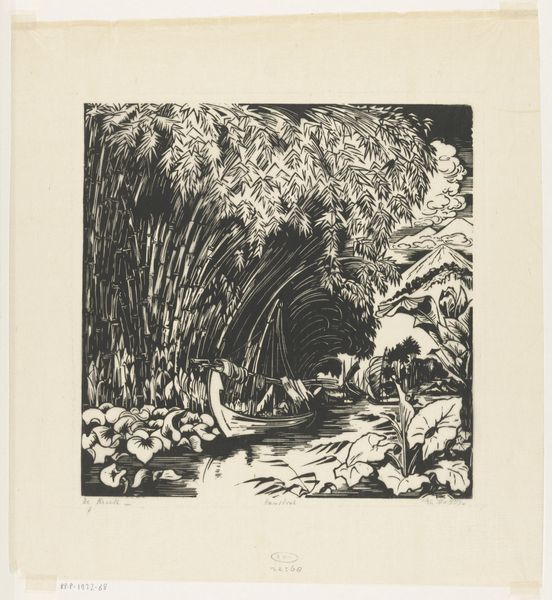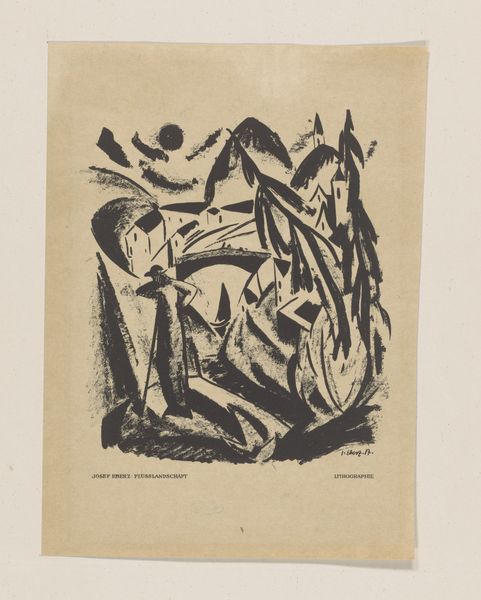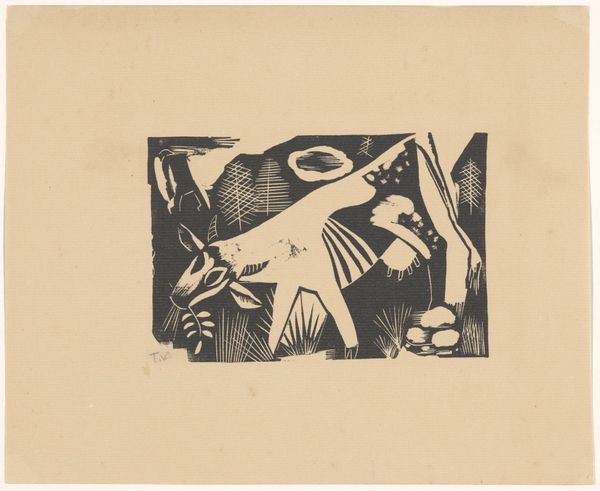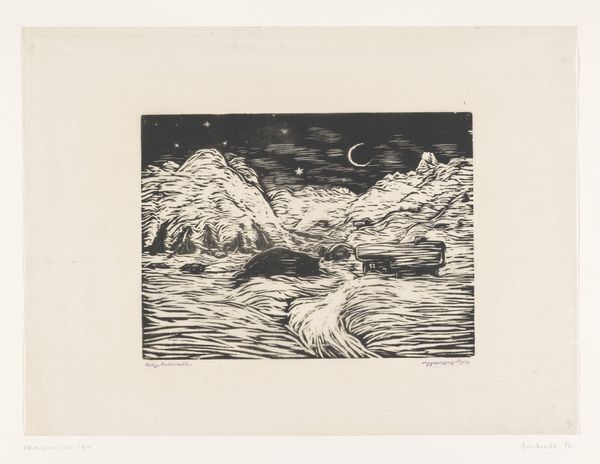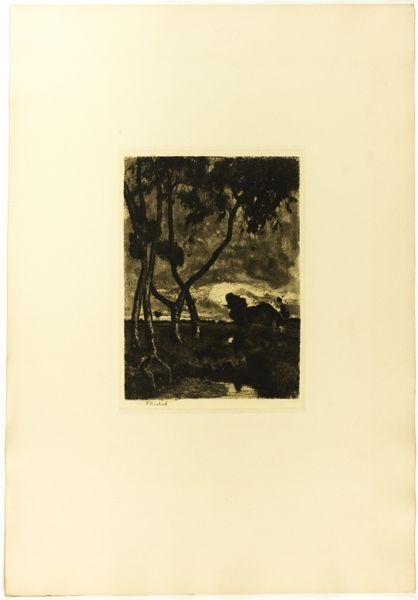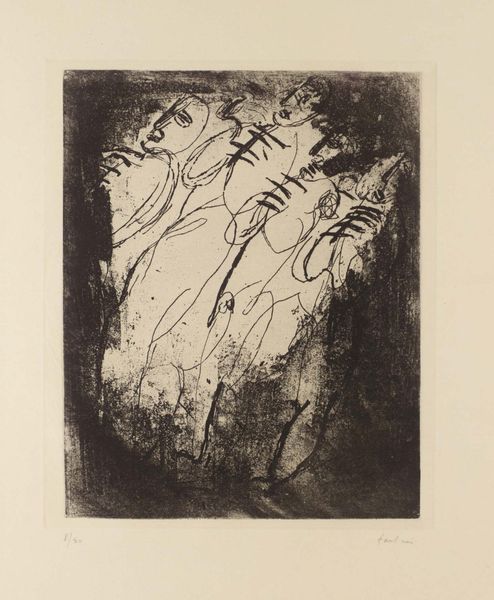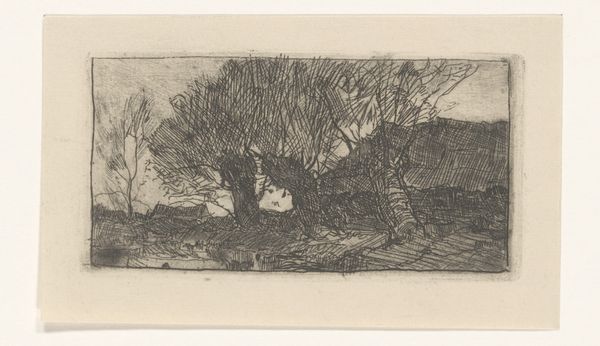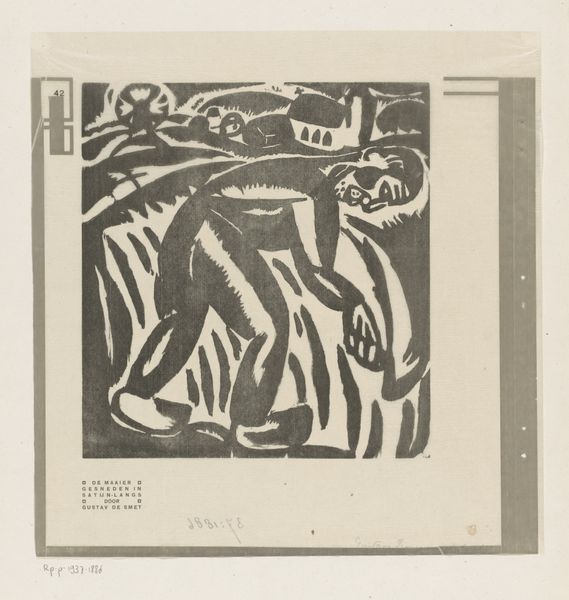
print, woodcut
#
ink drawing
# print
#
landscape
#
linocut print
#
woodcut
Dimensions: 317 mm (height) x 360 mm (width) (billedmål)
Curator: I find the starkness immediately striking. It's a landscape rendered with such strong contrast. Editor: We’re looking at "Skogen," a print made by Elsa Ström-Ciacelli sometime between 1920 and 1933, and held in the collection of the SMK, the Statens Museum for Kunst. What details about the materials do you notice in the composition of this linocut? Curator: Well, you can clearly see the way the artist worked with the block. The sharp cuts, the solid areas of black ink… it speaks to a conscious engagement with the medium, celebrating the process of making a print. The almost brutal simplicity forces a confrontation with the raw materials. Do you see an institutional preference or cultural relevance emerging in a museum piece highlighting nature and the rural sphere during the interwar period? Editor: Absolutely. During that period, institutions were wrestling with representing national identity and finding cultural solace amidst social and economic upheaval. Ström-Ciacelli presents a deliberately simplified scene – almost allegorical in nature. Note the figures in the foreground, dwarfed by the trees. It really amplifies that sense of scale in relation to humanity's place in nature. Curator: And it's not a pretty, picturesque nature either, is it? The black and white rendering heightens the drama, even hinting at anxiety. I find it intriguing how a relatively simple, accessible medium can convey complex emotions. Think about the political landscape back then and consider if nature here takes a different cultural meaning. Editor: A worthwhile point to explore. It’s like she’s reminding us that this ideal of undisturbed nature is itself a constructed image, a reaction against the industrial advances reshaping society and culture. Ultimately, Elsa Ström-Ciacelli's print "Skogen" encourages reflection on human interaction with the environment as well as cultural trends that promoted the rural sphere as a sort of counterbalance. Curator: I think the piece provides insight into artistic intention while demonstrating how materiality and social contexts intertwine, making visible what’s usually considered external or secondary in other analyses. Editor: For me, the print prompts contemplation on both the enduring human desire for peace found in natural settings as well as the politics that shape the images representing it.
Comments
No comments
Be the first to comment and join the conversation on the ultimate creative platform.
